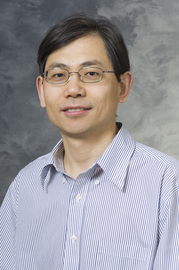
Research statement: Synapses and Neural Circuits
The synapse, a highly specialized structure between neurons, is essential for information processing and integration in neuronal circuits; malfunctions of synapses are present in many neurological and psychiatric diseases (such as Alzheimer's disease, Parkinson's disease, Huntington's disease, epilepsy, autism, and schizophrenia). Elucidating the function and development of synapses and neural circuits not only has profound implication for understanding brain function but also holds great promise for the development of novel therapies for brain diseases.
The research of the Lou lab focuses on the interface of biophysics and cell biology in central nerve terminals. The long term goal is to decipher the molecular and synaptic basis of behavior and brain diseases. For decades, the postsynaptic neuron and its role in learning and memory have been intensively studied, however, many fundamental questions remain at presynaptic nerve terminals. The lab studies the key molecules and signaling underling the precise control of synaptic strength, plasticity and development at the presynaptic side. The lab’s research discoveries in the past advanced the current understanding of synaptic function and changed our way of thinking cellular signaling in the brain.
The Lou lab is pursuing the following research directions currently:
To answer these questions, the lab mainly uses the calyx of Held, a giant, glutamatergic synapse located in the auditory brainstem as its model synapse; this powerful synapse provides a valuable model to study fundamental aspects of presynaptic mechanisms of central synapses in mammals, researchers have gained and will continue to gain much insight into synaptic transmission using this model.
The Lou lab develops and applies cutting-edge technology to drive its research and push the boundary of our knowledge. An interdisciplinary approach in the laboratory, employing electrophysiology, caged-compound photolysis, live-cell fluorescent imaging, molecular biology, mouse genetics and computational modeling, has been established. The Lou lab also utilizes and develops other novel technology for its research, such as molecular manipulation in live cells and super-resolution optical imaging by STED (stimulated emission depletion) microscopy, PALM (photo activated localization microscopy) or STORM (stochastic optical reconstruction microscopy).